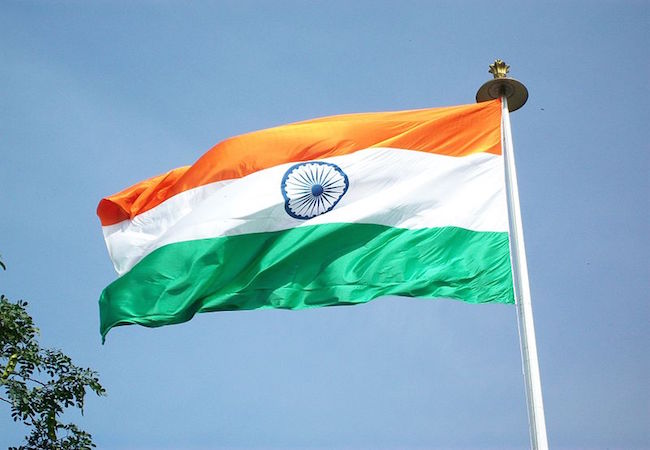
By Beenish Altaf
At last the curtains, albeit slightly, have started rising up with regards to Indian nuclear security matters. Besides the Indo-US strategic partnership aiming at mutual outcomes, the US had now come up with some factually correct information that pointed at the Indian nuclear facilities potential threats. Incidentally, it has been on the press recently with help of the US report on preventing nuclear terrorism that has expressed concerns over ‘insider threats’ against India’s nuclear assets.
The report titled ‘Preventing Nuclear Terrorism: Continuous Improvement or Dangerous Decline?’ formulated as a Project on Managing the Atom Report released by Belfer Center for Science and International Affairs Harvard Kennedy School. According to this report the US officials have reportedly ranked Indian nuclear security measures as weaker than those of Pakistan and Russia, and the US experts visiting the sensitive Bhabha Atomic Research Centre in 2008 described the security arrangements there as extraordinarily low key.
As compared to the prior debates blazing over Pakistan’s NTI ranking (both theft of sabotage ranking) it is highlighted in aforementioned report that although India has taken significant measures to protect its nuclear sites, its nuclear security measures may be weaker than those of Pakistan. India faces significant insider corruption. It is difficult to judge whether India’s nuclear security is capable of protecting against the threats it faces within itself as the information available about India’s nuclear security measures is too limited in this regard.
Examining about the Indian nuclear security and safety measures many such incidents have been on record that squeal about its poor record. Investigating that, Vijay Singh, a Central Industrial Security Force (CISF) head constable at the Kalpakkam Atomic Power Station in 2014, shot and killed three people with his service rifle. Although the CISF had a personnel reliability program in place, it was not able to detect Singh’s deteriorating mental health, despite multiple red flags including him saying that he was about to explode like a firecracker. Albeit of India’s evidential stockpile of nuclear weapons and weapons-usable nuclear material, India also has a civilian plutonium reprocessing program in a workable practice.
Moreover, the threats to India’s nuclear security systems have been highlighted in the series of articles titled the Public Integrity Magazine, a subsidiary of Center for Public Integrity, and Foreign Policy Magazine, a subsidiary of the Washington Post, on India’s civil and military nuclear program, and in Foreign Policy and Hufington Post. So, the articles predominately dealing with the security risks to Indian nuclear weapons has been co-written by R Jeffry Smith, a member of the Council on Foreign Relations and Adrian Levy. Adrian Levy wrote five articles on India’s nuclear mining, enriched uranium and weapons. Levy has co-authored a book on the 2008 Mumbai attacks called The The Siege: Three Days of Terror Inside the Taj. The first Levy article titled India’s nuclear industry pours its wastes into a river of death and disease dated 14/12/2015 is about a supposed trail of disease and ill health caused by uranium mining by Uranium Corporation of India Ltd. The Second India’s nuclear solution to global warming is generating huge domestic protests 15/12/2015 is about the protests over the Russian built Electricity generating nuclear reactors at Kudankulam In Levy’s words Transparency and accountability are lacking at India’s largest nuclear park, where a Russian reactor was constructed with faulty parts over violent local resistance. They articulated that experts regarded the issue assurgent and Kalpakkam shooting alarmed Western officials who question whether India has adopted enough measures to safeguard its sensitive facilities and building blocks of a devastating nuclear bomb from being stolen by insiders with grievances, ill motives, or in the worst case, connections to terrorists. However, after conducting interviews of several US officials, they concluded that ‘Washington is not forcing India for rapid reforms. The Obama administration is instead going to avoid any friction that might disrupt a planned expansion of U.S. military sales to India.’
The Third India Is Building a Top-Secret Nuclear City to Produce Thermonuclear Weapons, Experts Say 16/12/2015 is about a mysterious new “Thermonuclear City” coming up at a place in Karnataka called Challakere. The article says it will be the subcontinent’s largest military-run complex of nuclear centrifuges, atomic-research laboratories, when it’s completed, probably sometime in 2017. It also speaks of anew nuclear arms race between India China and Pakistan.
The Third India Is Building a Top-Secret Nuclear City to Produce Thermonuclear Weapons, Experts Say 16/12/2015 is about a mysterious new “Thermonuclear City” coming up at a place in Karnataka called Challakere. The article says it will be the subcontinent’s largest military-run complex of nuclear centrifuges, atomic-research laboratories, when it’s completed, probably sometime in 2017. It also speaks of anew nuclear arms race between India China and Pakistan.
The Fourth India’s nuclear explosive materials are vulnerable to theft, U.S. officials and experts say 17/12/2015 as the name suggests is about lax security at India’s nuclear installations but Levy says Washington has chosen not to press for tougher security while its trade with India is booming. And the last Fast, Radioactive, and Out of Control 17/12/12015 is about India is not adequately safeguarding its booming nuclear installations and material according to US officials and experts.
Paradoxically, despite of bringing all the above issue into lime light, Western concerns are not enthusiastic in bringing in India into the mainstream of nuclear safety and security culture. Contrarily Pakistan’s nuclear concerns remained on the US screens yet in the absence of any recognized security failure. The Western think tanks continued to pressurizes Pakistan in or the other way to move towards limiting its element of sovereignty. No matter what the verdicts were: either to roll back or cap off, or to normalize or limit the nuclear weapons. Well, conspicuously the US is not forcing India to take any precautionary and safety measures, by the way that it should. The Obama administration is instead going to avoid any friction that might disrupt a planned expansion of U.S. military sales to India.




